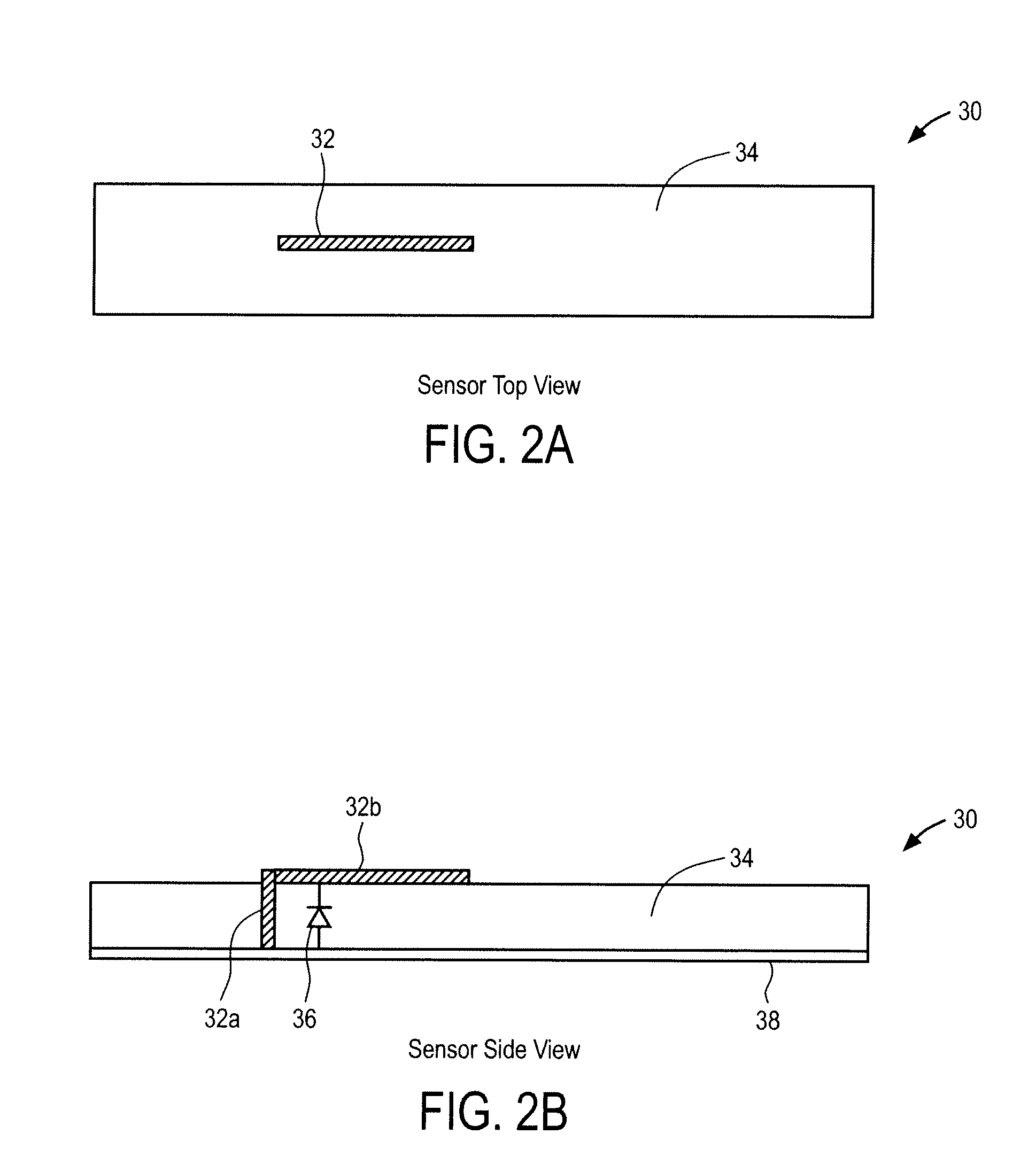Wireless temperature measurement system and methods of making and using same
a temperature measurement and wireless technology, applied in the field of sensors, can solve the problems of significant structural and aerodynamic problems, adversely affecting the performance of the turbine, and the effectiveness of certain temperatures and/or dynamic or harsh conditions, and achieve the effects of low mass, low mass, and small footprin
- Summary
- Abstract
- Description
- Claims
- Application Information
AI Technical Summary
Benefits of technology
Problems solved by technology
Method used
Image
Examples
example 1
[0102]The frequency offset data of one embodiment of a temperature sensor constructed in accordance with the principles of the present invention has been shown to be monotonic over a desired temperature range with repeatable results over multiple measurement sets. Data demonstrating the relationship between antenna resonant frequency and temperature are shown in FIG. 17, which was acquired utilizing direct network analyzer measurements. Testing showed that data taken during transition from a high temperature to a low temperature was substantially the same as data obtained during transition from a low temperature to a high temperature. These observations indicate that there is little or no hysteresis in the temperature sensor response after repeated heating / cooling cycles. The resolution for the temperature sensor was within −187 ppm / degrees Celsius in a temperature range from 25 to 1000 degrees Celsius. By comparison, previously known devices are reported to have a resolution of −34...
example 2
[0103]The accuracy of an embodiment of a temperature sensor constructed in accordance with the present invention was analyzed by comparing temperature determinations of the inventive sensor to the temperature of an oven. Results of these tests are presented in FIGS. 18A and 18B. As shown in the table of FIG. 18B, the testing demonstrated a strong correlation between the temperature determined with the temperature sensor and the oven temperature. These test results did not consider the oven temperature control resolution, and therefore the oven temperatures (25° C., 150° C., 200° C., 250° C.) may actually have been slightly more or less than the reported values. The temperature measurements of the temperature sensor of the present invention were conducted using a centroiding algorithm to calculate temperature from the harmonic output center frequency. For purposes of this testing, the temperature sensor included an off-the-shelf diode suitable for the limited temperature range of the...
example 3
[0104]The antenna of the temperature sensor of the present invention may be considered a micro-gap derivative of a transmission line antenna due to the narrow spacing between the antenna element and the ground plane. Typically, a transmission line antenna is a conductive wire about ¼ wavelength long and placed parallel to and very close (<0.01 wavelength) to a much larger ground plane surface. One end of the ¼ wave conductor is connected to the ground plane and the other end is not connected. Close to the grounded end of the conductor, the impedance of the strip is approximately 50 ohms and purely resistive. In such embodiments, the antenna elements and associated interconnects preferably comprise platinum, rhodium, iridium, platinum:rhodium alloys, palladium or refractory materials.
[0105]An embodiment of a micro-gap antenna was constructed in accordance with the present invention. This antenna was tested and produced the results shown in FIG. 19. The performance of the antenna has ...
PUM
| Property | Measurement | Unit |
|---|---|---|
| Temperature | aaaaa | aaaaa |
| Distance | aaaaa | aaaaa |
| Frequency | aaaaa | aaaaa |
Abstract
Description
Claims
Application Information
 Login to View More
Login to View More - R&D
- Intellectual Property
- Life Sciences
- Materials
- Tech Scout
- Unparalleled Data Quality
- Higher Quality Content
- 60% Fewer Hallucinations
Browse by: Latest US Patents, China's latest patents, Technical Efficacy Thesaurus, Application Domain, Technology Topic, Popular Technical Reports.
© 2025 PatSnap. All rights reserved.Legal|Privacy policy|Modern Slavery Act Transparency Statement|Sitemap|About US| Contact US: help@patsnap.com



